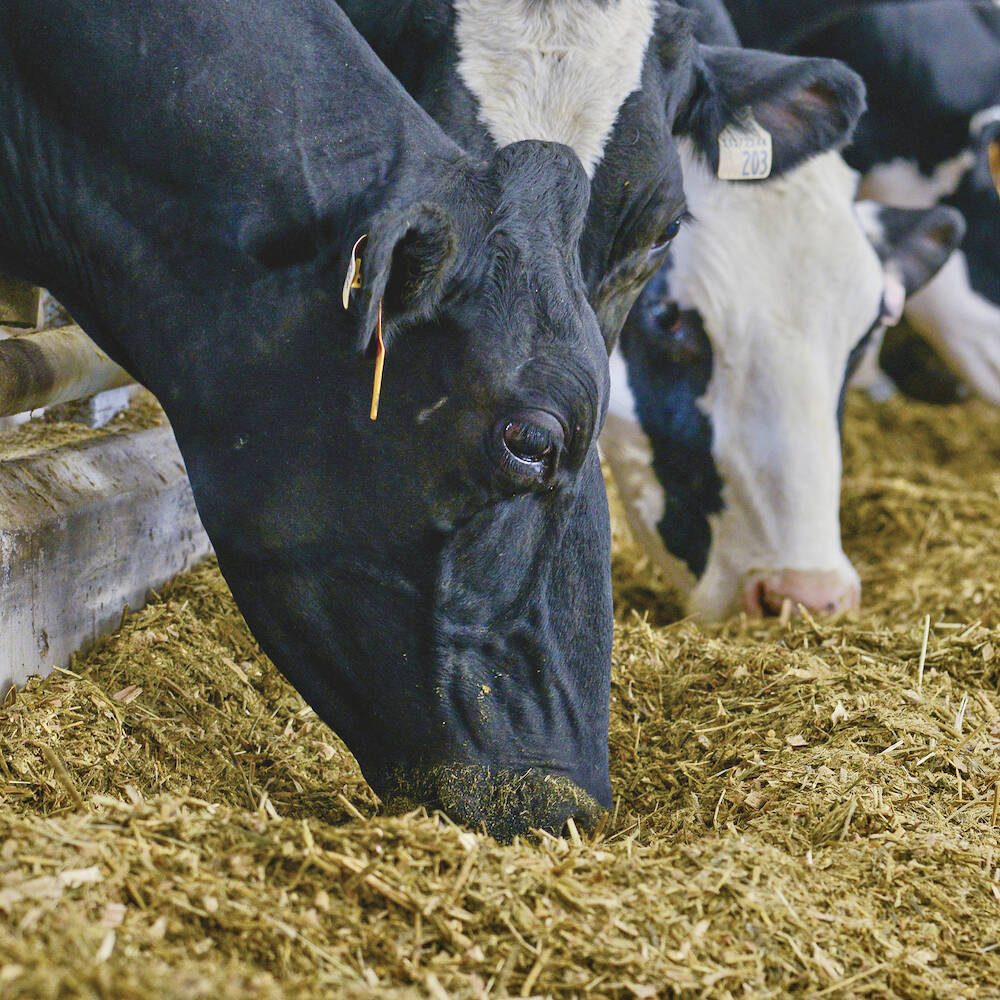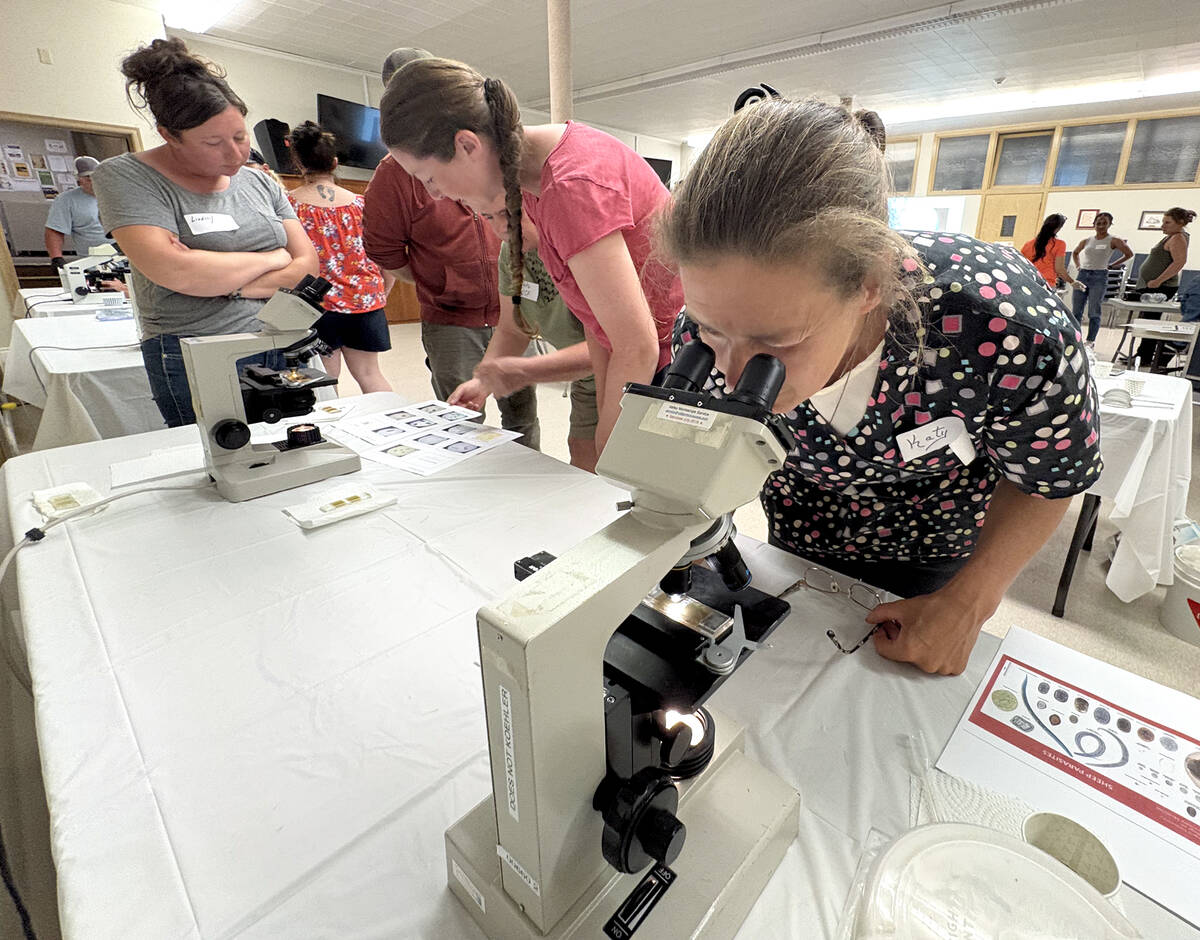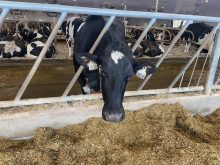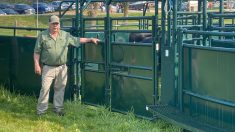Targeted deworming in small ruminants starts with the right animal, accurate dosing and smart timing.
That was the message to participants of a fecal egg count workshop hosted by the Ontario Sheep Farmers last month in Lindsay.
Why it matters: Small-ruminant worm drug resistance remains a concern in Canada, especially with no new treatments on the horizon.
Dr. Brad DeWolf, a veterinarian, and Victoria Allcock, a master’s student at the University of Guelph, are researching parasite control in small ruminants. They led 12 sheep and goat producers through the hands-on workshop, covering Modified McMaster fecal egg count (FEC) training, parasite identification and tools essential for reducing parasite loads, slowing resistance and preserving dewormer effectiveness.
Read Also

Byproducts with benefits for dairy cows
Local food processors can be a source of financially advantageous byproducts for dairy cows, but make sure the ration is properly balanced.
“There’s not going to be a magic bullet,” said DeWolf, adding long-term sustainable parasite management requires a combination of strategies, including FECs to maximize dewormer benefit and slow resistance.
The workshop focused on identifying two major parasite types in sheep and goats:
- Gastrointestinal nematodes (often called GINs), such as Haemonchus (barber pole worm) and Trichostrongylus, which live in the digestive system and cause disease; and
- Coccidia, typically affecting lambs, which leads to diarrhea and impaired growth performance.
“It’s no surprise parasites are costing every sheep producer money to some degree,” DeWolf said, whether that’s due to drug costs for deworming or animal deaths.
While Canada hasn’t reached the dewormer resistance levels encountered in New Zealand, DeWolf noted some resistance is already present, making selective and targeted treatment critical.
Timing is crucial, as worm development and shedding fluctuate with lambing, pasture conditions, farm practices and seasonal reductions in egg production, which can affect FEC accuracy.
Worms have a chance to build resistance with every dewormer application and under dosing increases that opportunity, DeWolf explained.
“We would much rather err on the side of overdosing slightly than under dosing,” he said. “People tend to under dose slightly, and that’s a way to promote resistance. Making sure you have an accurate idea of what animals are weighing is absolutely essential.”
He emphasized that many farms already face low-level resistance, and monitoring FEC of individual animals showing parasite stress, rather than pool testing, helps identify high-burden animals, leading to more effective treatment decisions.
Farmer take-aways
New to the industry, Lindsey Wensink raises 40 ewes in the Reaboro area said the workshop filled knowledge gaps and added new tools to their management practices.
“We encountered a lot of different parasites in the last two years, and we’ve had two bouts of coccidiosis,” Wensink said, adding they use rotational grazing to limit worm load.
“So, it’s self-education, basically just being able to identify and treat as needed, rather than treating as a whole.”
Katy Touchette made the trek from Prince Edward County, where she works on a 2,000-head sheep operation.
“I wanted to learn how to do it and be able to do it myself to have a better grip on what’s going on in the flock, parasite-wise,” said Touchette. “And at the same time, saving a few bucks from the vet.”
With flock-wide FECs costing $90, learning to test individuals and the flock accurately can reduce unnecessary treatment and lower costs. Touchette said having practical training early in the grazing season will help the operation avoid over-treatment and confirm worm load when symptoms such as poor body condition arise.
“I’m going to walk away with much knowledge and a new ability to be more efficient in my work,” she said. “It’s something that we already do, but if we can do it ourselves, it might be just done quickly and more often.”
Tammy Nurse of Campbellcroft manages a 60-head Rideau flock in a barn and open yard, where she feeds hay, forgoing pasturing altogether. With this setup, she said she’s only needed to worm two sheep in 13 years.
“Once you pasture, you end up with a huge problem with worms,” Nurse said. “(Parasites are) one of the most expensive things that’s hard on a sheep flock, and especially hard on your bottom line.”
She advocates for breeding worm-resistant sheep instead of relying solely on dewormers.
“A 100 years ago, sheep were resistant, because if they weren’t, they died,” she explained. “(My ram) was subjected to heavy worm loads, and he was tested to have low amounts of them. Even though he was exposed to them, they didn’t take.”
To address coccidia in lambs, she uses Toltrazuril as a preventative. Although it doesn’t eliminate the coccidia parasites, it slows their growth, giving lambs time to build immunity and reduce scours-related dehydration — a key concern in barns where disinfecting wooden surfaces is difficult.
Treat your dogs
Anita O’Brien, OSF’s on-farm program lead, explained that Taenia ovis, a tapeworm found in farm dogs, guardian dogs or visiting dogs is not detectable through small ruminant FEC tests. The parasite causes “sheep measles,” which is on the rise and can lead to carcass condemnation.
Dogs contract the parasite by eating raw meat infected with “sheep measles” cysts. They then shed tapeworm eggs onto grass, which sheep ingest while grazing. The parasite moves into the muscle, forming cysts that result in meat being condemned.
“We recommend getting a dog worming program that targets tapeworms,” said O’Brien. “And any dogs that are coming to the farm, we need to be confident that they are not carrying this tapeworm and leaving it behind.”
The OSF emphasized that deadstock must be dealt with promptly to prevent scavenging by dogs or wildlife, which can spread or restart infection cycles.
Upcoming FEC workshops will be held in Walkerton and Ilderton this July. More information is available at www.ontariosheep.org.













